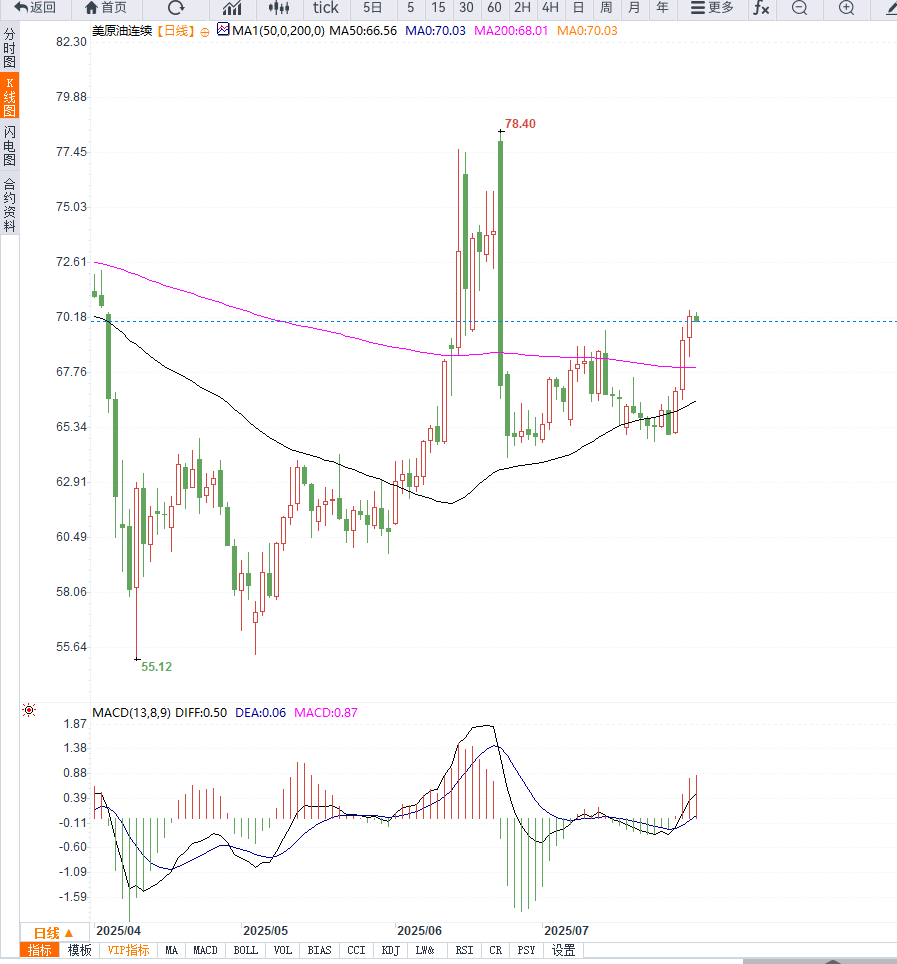Crude oil trading reminder: The Federal Reserve's interest rate decision has been released, oil prices continue to rebound, and a bullish outlook is maintained in the short term
2025-07-31 09:59:13
Recently, the market has focused on the statement of US President Trump, who demanded that Russia make "substantial progress" on the situation in Ukraine within 10-12 days, otherwise he would impose 100% secondary tariffs on its trading partners, significantly bringing forward the previous 50-day deadline.

Trump also announced a 25% tariff on Indian imports starting Friday, and negotiations with Asian countries have yet to reach a consensus.
"Market concerns that the imposition of secondary tariffs on countries importing Russian crude oil will directly hit the supply chain have become the main factor driving up crude oil prices," said Fujitomi Securities analyst Shuntaka Tazawa.
Meanwhile, the U.S. Treasury Department on Wednesday imposed new sanctions on more than 115 individuals, companies, and ships linked to Iran, signaling the Trump administration is intensifying its "maximum pressure" campaign against Iran following the bombing of a key Tehran nuclear facility in June. Asian countries, among the largest buyers of Iranian crude oil, also face the potential threat of high tariffs.
Inventory data suggests a continued struggle between supply and demand. Data from the U.S. Energy Information Administration (EIA) showed that U.S. crude oil inventories unexpectedly surged by 7.7 million barrels to 426.7 million barrels in the week ending July 25, far exceeding the expected 1.3 million barrel decline. However, gasoline inventories fell by 2.7 million barrels to 228.4 million barrels, exceeding market expectations for a 600,000 barrel drop.
"Although crude oil inventories unexpectedly increased significantly, the rapid decline in gasoline inventories showed that demand during the peak driving season remained strong, and the overall inventory data had a neutral impact on the market," added Fujitomi Securities analyst Shuntaka Tazawa.
From a daily perspective, WTI crude oil prices have closed higher for four consecutive days since rebounding from the $66 level. It is currently running stably above the integer mark of $70 per barrel. The short-term moving average system is in a bullish arrangement, and the MACD indicator remains above the zero axis, indicating that the bullish momentum is still strong.
If the price breaks through the previous high of $73.80, it is expected to further rise to the $75.50-$76 area. Conversely, if it falls below the $70 mark, it may trigger short-term profit-taking, and further support will focus on the $68.50 level. Overall, the short-term trend remains bullish.

Editor's opinion:
The current upward momentum in international oil prices comes more from trade concerns and expectations of potential supply tightening, especially the high tariffs and sanctions promoted by the United States, which are reshaping the international crude oil trade landscape.
While inventory data indicates increased supply, declining gasoline inventories and resilient demand are supporting oil prices. If US policy escalates further, oil prices are likely to break through $74 and stabilize. However, if the situation between Russia and Ukraine de-escalates or negotiations progress, market sentiment could quickly reverse.
- Risk Warning and Disclaimer
- The market involves risk, and trading may not be suitable for all investors. This article is for reference only and does not constitute personal investment advice, nor does it take into account certain users’ specific investment objectives, financial situation, or other needs. Any investment decisions made based on this information are at your own risk.





















